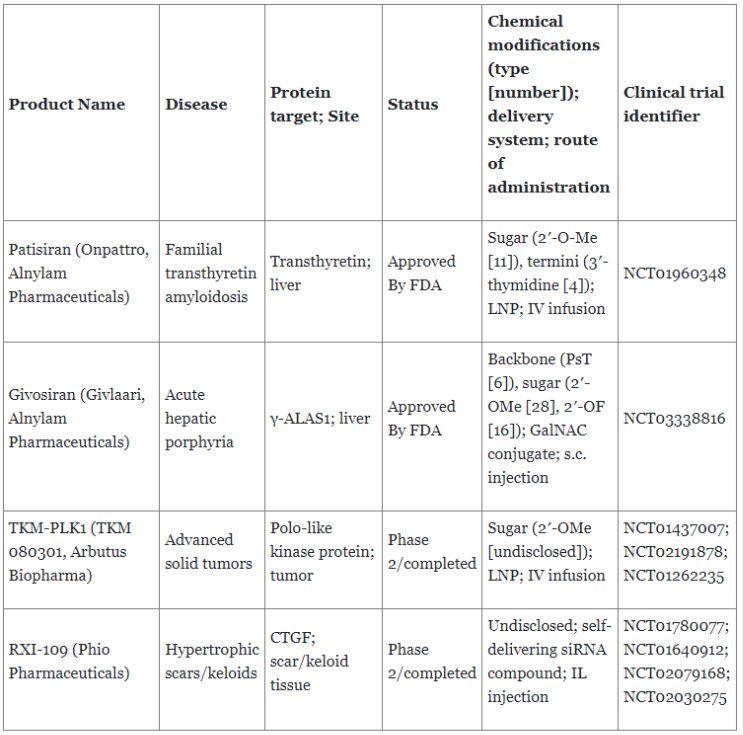A Look At siRNA & Market Trends
By Shalini Nagar, Research Nester

In the world of modern medicine and biotechnology, the understanding of genetics and the ability to manipulate genes have opened doors to revolutionary treatments and therapies. Among the many breakthroughs, small interfering RNA (siRNA) technology has emerged as a powerful tool for targeted gene silencing. Here we delve into new market analysis on the siRNA industry, exploring its applications and the promise it holds for the future of healthcare.
How Does siRNA Function?
siRNA is a class of molecules that play a crucial role in the regulation of gene expression. These tiny pieces of genetic material can specifically target and silence individual genes by disrupting the translation of their genetic code into proteins. This selective silencing ability makes siRNA a game changer in biotechnology and medicine.
siRNA is a key component of the RNA interference (RNAi) pathway. Its primary function is to selectively silence or “turn off” the expression of specific genes by interfering with the translation of messenger RNA (mRNA) into proteins. Here is how siRNA functions:
- Gene targeting — siRNA is designed to target specific genes or mRNA molecules. Each siRNA molecule is complementary to a particular mRNA sequence, allowing it to bind and interact with the target mRNA.
- Initiation of RNAi — Once inside a cell, siRNA is incorporated into the RNA-induced silencing complex (RISC). The RISC unwinds the siRNA molecule, revealing its single-stranded guide strand, which carries the sequence information for mRNA recognition.
- Complementary base-pairing — The guide strand of siRNA binds to the complementary mRNA through base-pairing. This binding is highly specific and only occurs when there is a perfect or near-perfect match between the siRNA and the target mRNA.
- mRNA cleavage — The binding of siRNA to the target mRNA triggers the RISC to cut the mRNA at the site of interaction. This cleavage prevents the mRNA from being translated into a functional protein.
- Silencing gene expression — With the mRNA cleaved, the cell cannot produce the corresponding protein. As a result, the gene’s expression is effectively silenced, leading to a decrease or complete halt in the production of the protein coded by that gene.
- Transient effect — siRNA-mediated gene silencing is usually transient. As the affected mRNA is degraded and cellular machinery continues to function, the gene’s expression can return to normal once the siRNA is no longer present.
The ability of siRNA to selectively and precisely target specific genes makes it a powerful tool in molecular biology, genetics, and biotechnology. Researchers use siRNA to study gene function and regulation, investigate disease, and more. This technology has immense potential in personalized medicine and offers innovative solutions for treating a wide range of diseases.
Applications Of siRNA Therapeutics
- Cancer treatment — siRNA offers new hope for personalized cancer therapies. By targeting the specific genes responsible for tumor growth, siRNA can potentially slow down or even halt the progression of cancer.
- Viral infections — Viral infections, such as HIV and hepatitis, are being studied for siRNA-based treatments. These therapies aim to disrupt the replication of the virus and inhibit its spread within the body.
- Genetic disorders — Diseases like Huntington’s disease and muscular dystrophy are being explored as potential candidates for siRNA-based treatments, to alleviate the symptoms or slow down the progression of the disease.
- Neurological disorders — Researchers are investigating the use of siRNA to target genes associated with neurological disorders, offering potential treatments for conditions like Alzheimer’s and Parkinson’s disease.
Market Overview
According to our new market analysis, the market for small interfering RNA is expected to exceed $67 billion by the end of 2036, with a compound annual growth rate of around 18.5% during the forecast period (2024 to 2036). The size of the small interfering RNA sector was $13 billion in 2023.
Factors associated with the market’s growth:
- Increasing Research and Development — A surge in research and development activities related to gene therapy and personalized medicine drives the demand for siRNA technology.
- Rising Incidence of Genetic Disorders — As genetic disorders become more prevalent, there is an increasing need for effective treatment options, which siRNA technology can potentially provide.
- Advancements in Drug Delivery — Improved methods of siRNA delivery, including nanoparticles and lipid-based carriers, have made it easier to administer siRNA-based therapies.
- Supportive Regulatory Environment — Regulatory agencies are becoming more supportive of innovative gene therapies, creating a favorable environment for siRNA-based drug development.
- Strategic Collaborations — Partnerships between biotech companies, pharmaceutical giants, and research institutions are fostering innovation and accelerating the development of siRNA-based therapies.
Segmentation Trends
Based on type, the small interfering RNA industry is segmented into:
- liposome based systemic therapy
- nanoparticle based systemic therapy
The liposome-based systemic therapy segment is estimated to garner the largest market share in the years to come. Liposomes offer several advantages as a siRNA delivery system owing to their ability to improve the delivery of antigens and other stimulatory molecules to antigen-presenting cells or T cells. Moreover, liposomes can selectively transport medications to the tumor, can be utilized to deliver specific medications to specific cell types to improve anti-tumor immune responses, and are known to be good carriers for drug delivery in conjunction with other therapies such as chemotherapy, radiation, and phototherapy.
Based on indication, the small interfering RNA industry is divided into these segments:
- cardiovascular diseases
- respiratory diseases
- oncology
- neurodegenerative diseases
- infectious diseases
The oncology segment is anticipated to hold major market value over the years. siRNA suppresses the expression of the carcinogenic genes by targeting the mRNA expression. In the treatment of many forms of cancer, cationic polymer-based delivery systems are being investigated for the delivery of siRNAs. Some of the cationic polymers used are chitosan and cyclodextrin, which are very effective anticancer drug delivery systems.
Regional Analysis
The industry for siRNA has well-developed markets in Europe, North America, Asia Pacific, Middle East & Africa, and South America.
North America accounted for the largest market share during the past few years. Increasing spending on healthcare in the region is a primary factor for the market’s development in the region. Spending on healthcare in the U.S. increased by 4.1% to $4.5 trillion or $13,493 for each person in 2022. Spending on health services accounted for 17.3% of the country's gross domestic product. Moreover, the region is experiencing robust growth, driven by extensive research and development efforts, increasing investments in biotechnology, and a strong focus on personalized medicine. Pharmaceutical and biotech companies in the region are at the forefront of siRNA-based drug development, targeting a wide range of diseases. Additionally, a supportive regulatory environment and partnerships between academia and industry further fuel market expansion. With a rising demand for innovative gene-based therapies, the North American siRNA sector continues to flourish, promising significant advancements in healthcare and the treatment of various genetic disorders and diseases.
Key Players In The Market
- Alnylam Pharmaceuticals, Inc. — Alnylam is a pioneer in RNAi therapeutics and has been at the forefront of siRNA-based drug development.
- Arbutus Biopharma — Arbutus is involved in RNAi-based drug discovery and development, focusing on infectious diseases and liver diseases.
- Phio Pharmaceuticals (formerly known as RXi Pharmaceuticals) — It is engaged in the development of RNAi-based therapies, with a focus on dermatology, ophthalmology, and fibrotic disorders.
The table below shares siRNA therapeutics that have been approved and siRNA therapeutics in development.
![]() Recent Innovations
Recent Innovations
- By changing the fundamental agronomic features, including inflorescence, branching, height, and size, RNAi can be employed to increase crop output. For instance, by employing this method, rice OsDWARF4 gene knockdown produced a dwarf plant with an upright leaf shape and increased photosynthesis.
- In a recent clinical study, Fitusiran uses a mechanism of RNA interference to knock out the endogenous anticoagulant antithrombin gene. The therapeutic hypothesis refers to the fact that hemophilia A and B are essentially disorders that occur due to a lack of thrombin. In patients with severe hemophilia without inhibitors, the loss of this gene resulted in a significant drop in bleeding rates on an annual basis.
Conclusion
The small interfering RNA (siRNA) industry is on the cusp of a significant breakthrough in the world of therapeutics and gene regulation. Its potential to target specific genes and silence their expression opens new possibilities for treating a wide range of diseases. With continued research, innovative delivery methods, and supportive regulatory frameworks, siRNA technology is set to revolutionize the way we combat genetic disorders, cancer, and viral infections. The journey to unleash the full potential of siRNA is an exciting one, with a future that holds the promise of more effective and personalized treatments for patients worldwide.
 About The Author:
About The Author:
Shalini Nagar is a content associate at Research Nester Pvt. Ltd.

 Recent Innovations
Recent Innovations